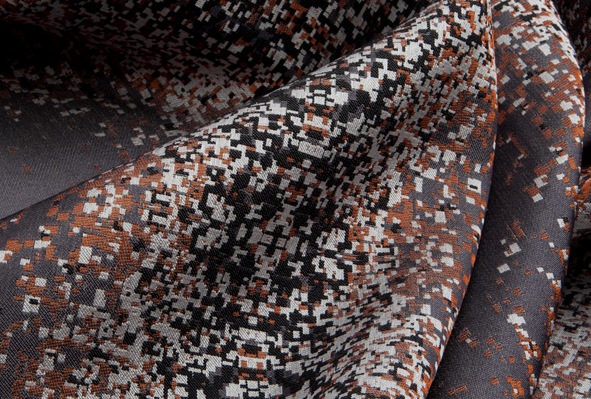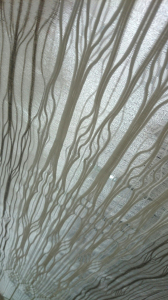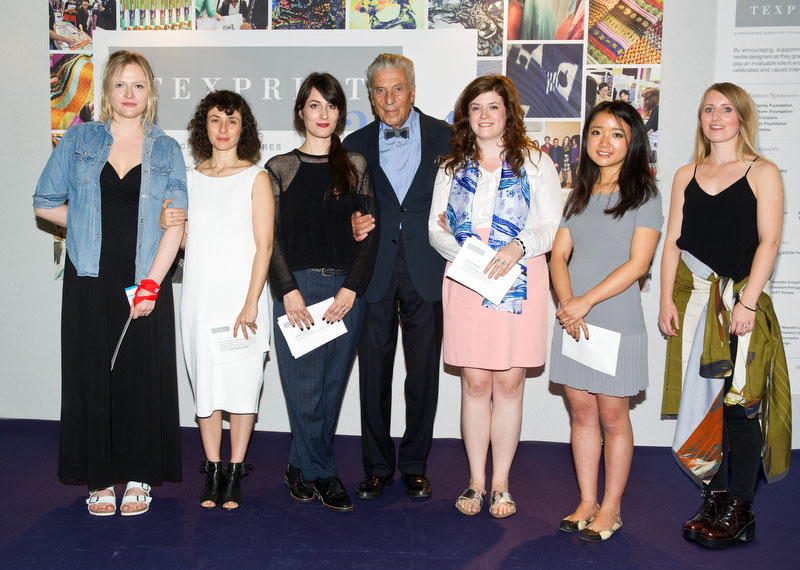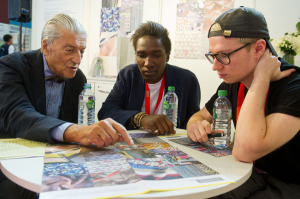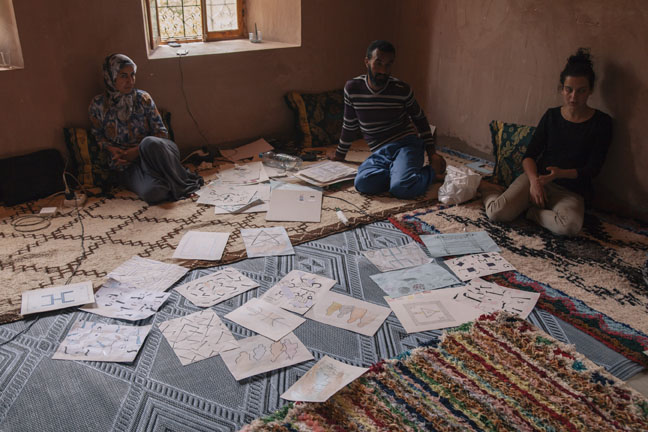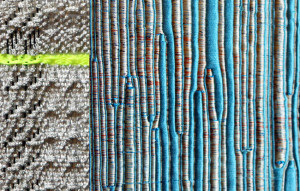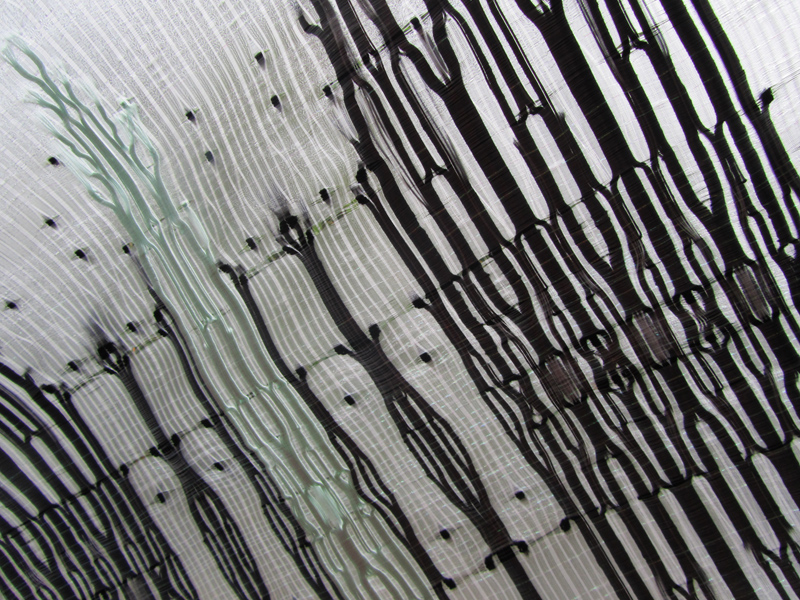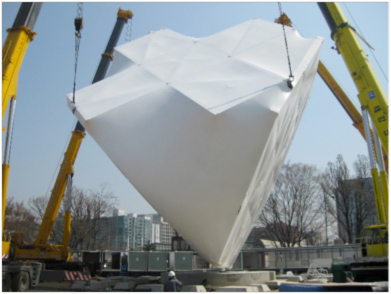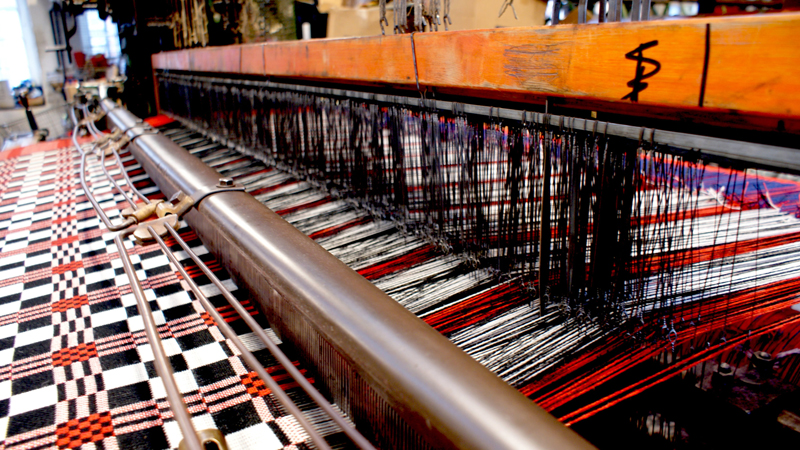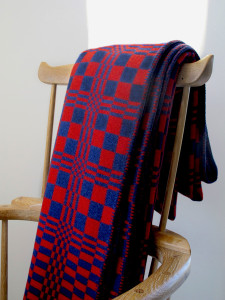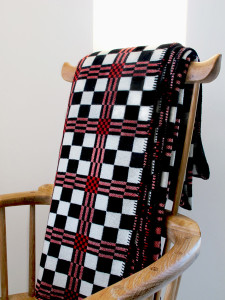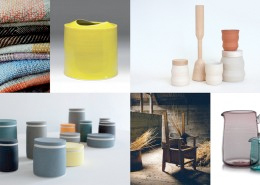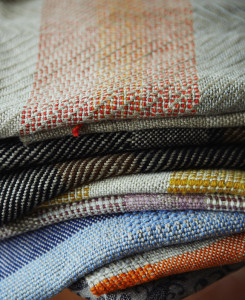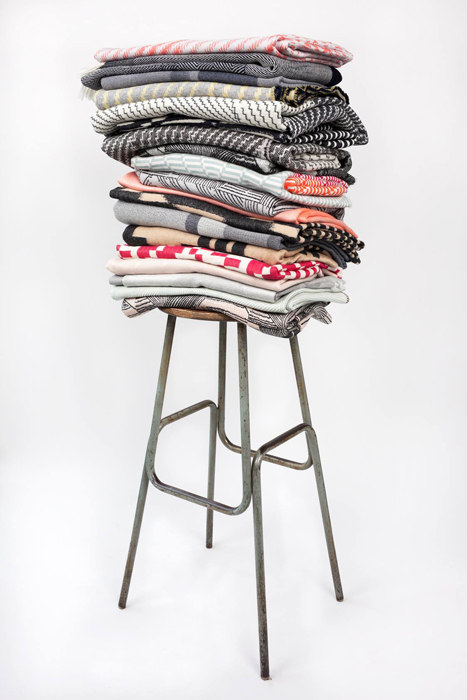As a part of The Southbank’s summer festival The Festival of Love and the London Philharmonic Orchestra’s (LPO) year long festival, Rachmaninoff: Inside Out, Nadia-Anne Ricketts was commissioned to create a textile art piece for the Royal Festival Hall interpreting Rachmaninoff Piano Concerto No. 2. This was used within David Lean’s award winning 1945 love film Brief Encounter, which was screened at the Hall in August, and was accompanied by a newly commissioned orchestral soundtrack played by the LPO itself.
She has also designed  a small capsule collection of woven textiles with three design variations, which show how one song can be translated into a handful of designs, either literally or abstract. These are currently available to purchase at The Southbank Centre.
At her London design studio, BeatWoven, Ricketts has designed a bespoke audio software program that translates any played music into visual patterns, especially for weaving. “Similar to that of a very granulated, broken down sound wave, it inspects and discovers the patterns happening within the sound wave.”
For the commissioned piece, she started by playing the Rachmaninoff concerto over and over through the software to analyse and become familiar with the patterns. Though the basic colour palette was determined by the interior design of the Royal Festival Hall, where it will be installed, Ricketts also uses her previous performing experience to connect with the music, juxtaposed with extensive research for each song, including the artist, genre, era and story behind its composition, to ultimately choose colour combinations and yarns. “When designing my musical textile pieces I feel that I am expressing my passion for music in a visual way, rather than as a dance performance. The designing and making process becomes my visual music performanceâ€.
Continue reading →

